The microclimate of the premises is a state of the internal environment of the building, which has both positive and negative effects on humans, characterized by indicators of temperature, mobility and humidity.
Main settings
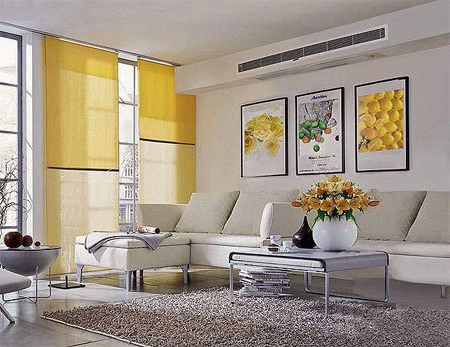
In order to determine air quality, it is necessary to take into account the microclimate parameters in the premises, which include:
- the availability of light sources;
- chemical composition of air;
- noise level;
- the presence of radiation;
- space pollution and saturation with mechanical particles (dust).
The basic requirements for the microclimate of the premises are characterized by the state of the environment of the internal space of the object, which must fully comply with the psychological and physiological needs people. The place where a person is located must be environmentally friendly, and must also protect from chemicals and high noise.
Climate parameters can be divided into:
- Optimal - they combine indicators of the interior space of the room, due to which, with prolonged exposure to a person, the normal thermal state of his body, as well as the minimum voltage of thermoregulation and a sense of comfort, will be observed.
- Acceptable are the parameters at which, in the presence of a prolonged and systematic effect, a person may experience a deterioration in well-being, a local feeling of discomfort and a decrease in overall performance. All these indicators do not cause big health problems.
Creating a microclimate
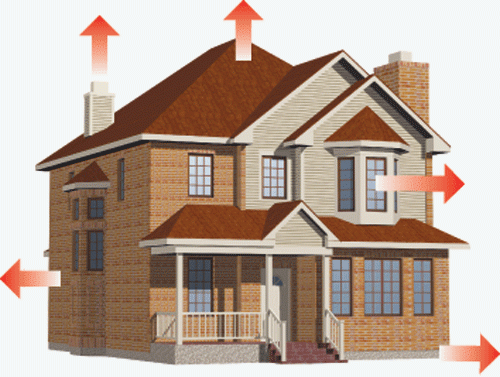
In order to get a microclimate acceptable for humans in a living room, it is necessary to take into account many factors, which primarily include:
- air exchange;
- humidity and noise level;
- temperature;
- air saturation with dust particles;
- the speed of movement of air masses.
If it is necessary that the house has a quality environment, then all these factors must be brought back to normal.
Oxygen level
This indicator in residential premises should not be lower than 21%. In order to get the necessary oxygen saturation, you need to constantly open the windows and ventilate. Of course, this is not always convenient, so for such purposes it is better to install modern equipment with the function of "climate control". This system will take care not only of enriching the air with oxygen, but also of a comfortable temperature, which should be no lower than 21 degrees during the day and 18 at night.
Air humidity

The microclimate of the rooms is also characterized by humidity indicators: the range from 40 to 60% is considered the most comfortable level for a person. It should be borne in mind that the extreme edges can be at around 30% and 70%. If levels beyond these values are present, then the person will have dry skin and mucous membranes of the respiratory tract, or he will become uncomfortable, hot and stuffy. It is important to know that in such housing furniture, floors and wallpaper will peel off.
In order to correct the situation, it is possible to improve the efficiency of ventilation systems, as well as use humidifiers. Some to fix this situation in their premises install large aquariums with an open lid. This is a very beautiful design decision. And due to the fact that moisture evaporates from the surface, the necessary parameters are set in the room.
You can also improve performance using special indoor plants, they also give beauty and comfort. In order to determine the humidity level of the room, a special device is used - a hygrometer. In those cases in which the performance is much higher than average, you will need to review the ventilation system and think about the use of air conditioners and special dehumidifiers. Excessive humidity, as a rule, negatively affects human health and well-being. If a large amount of moisture is present, then various fungi and mold will begin to multiply quite quickly in the air, while walls, clothes, furniture, food and books will deteriorate. In such a situation, a person’s immunity worsens quite a lot, and he becomes susceptible to many diseases, including chronic ones.
Room temperature

One of the main factors affecting the microclimate of premises is temperature condition. It is believed that the temperature is ideal for residential premises, which ranges from 20 to 22 degrees. For example, you can provide experimental data: at a temperature of 18 degrees a person feels as comfortable as possible, and after it rises to 24 degrees, he begins to complain about discomfort and unwell health. Therefore, everything must necessarily have a middle ground, since people usually do not like it when the house is very hot and, conversely, too cold.
If the optimal microclimate of residential premises is violated, then with prolonged exposure, unpleasant temperature can weaken the human body and reduce its immunity. This applies not only to very cold rooms, but also too hot, since such conditions are not the best environment for human health.
In the cool season, the temperature regime primarily depends on the efficiency of heating systems, and in the hot season it is supported by air conditioning systems. If utilities do not cope with the task of thermoregulating a living room, then such care must be taken by the residents in their own hands, since their health depends on it.
Air movement

Hygienic requirements for the microclimate of the premises suggest that the air that is in the housing should be fresh (without unpleasant odors), moist and, importantly, mobile. All these indicators mainly depend on the ventilation and ventilation of the premises. Where there are weak streams, stagnant air becomes a factor that also worsens human health.
In the cool season, the movement should be in the range from 0.1-0.3 m / s. In the event that there are large indicators, they will certainly provoke a draft, which at such a time can lead to a cold.
Determining on your own how high-quality air is in an apartment is almost impossible; you need to mainly listen to your own feelings. To improve its quality, it is necessary to use an effective ventilation system and ventilate the room on an ongoing basis. It is important to monitor the level of dust and regularly carry out wet cleaning, cleaning both easily and inaccessible places.
Noise reduction and light mode
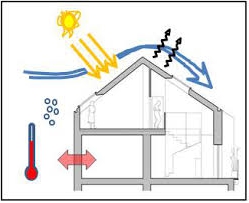
The microclimate of the premises suggests that they will have a high-quality light regime. It is directly associated with the natural light of the room with the sun's rays. This is considered very important, since it is possible to create an optimal light regime and determine periods of favorable physical activity of the body. It is noted by experts that the sun has a good effect on human health, strengthens the nervous system, increases tone and stimulates vital activity.
A good indoor climate also consists of an acoustic mode, since all the noise a person hears affects in one way or another his nervous system. It can be divided into external, the so-called noise of the big city, and inside the house, for example: the sounds of music, electrical engineering, repairs and the clatter of neighbors.
Protection from external factors is most often carried out using sound-absorbing thick walls or special “screens” reflecting sound waves. Also not the least role is played by windows that protect the room from the penetration of street noise. For home protection, modern insulating materials are used, the choice of which is quite large.
Climate indicators in industrial and office premises
The main requirements for the microclimate of the production room are characterized by such indicators:
- air temperature
- relative humidity;
- air velocity;
- intensity of thermal radiation.
In cases where the degrees are lower or higher than the permissible values, the employer must take organizational actions to improve the conditions for employees to stay in such an environment, since otherwise it may violate the norms of established standards.
In production rooms where it is not possible to establish acceptable microclimate parameters, it is necessary to characterize the working conditions as dangerous and harmful. With them, the employer is obliged to take measures to protect employees, which include: air showering, conditioning, the use of personal protective equipment, the mandatory creation of places for heating and rest, as well as the preparation of regulations for work in a harmful environment.
Microclimate parameters in industrial premises
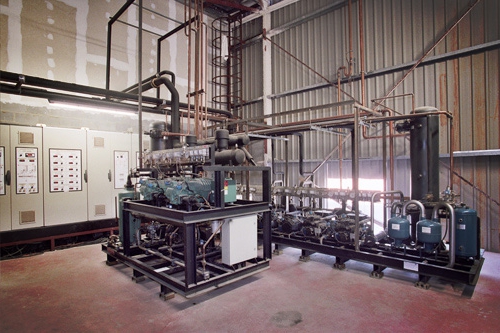
In such rooms in the process of labor, a person is under the influence of certain meteorological conditions, namely the climate of the internal environment. The main indicators include: relative humidity, temperature and air velocity.
There are quite extensive hygienic parameters of the microclimate in the premises, GOST in particular provides such:
- possible values of temperature drops throughout the entire shift, in particular, it depends on the category of energy costs of the work itself;
- optimal microclimate indicators at workplaces and in the building itself;
- permissible parameters at workplaces and in the premises themselves;
- the allowed values of the air velocity are characterized depending on the category of energy used at a temperature that ranges from 26 to 28 aboutWITH.
- indicators of possible values of relative humidity in rooms at 25 aboutC and above;
- the permissible values of the severity of thermal radiation of the entire surface of the body from sources that are present in the workplace;
- permitted temperature indicators when the employee will be exposed to thermal radiation (depending on the level of energy consumption);
- authorized values of the THC index, taking into account the mandatory duration of the heat load of the medium, its upper boundary;
- necessary air temperature in sanitary warehouses, premises and office buildings in the winter season;
- the maximum time an employee stays in the working area at a temperature that is greater than the permissible values;
- limit time for workers to be at temperatures below the required values.
In order to create the required microclimate parameters of industrial premises, air conditioning and ventilation systems, as well as various heating systems are used.
Hygienic regulation of the microclimate of industrial premises
The basic norms of the production state of the environment are established by the labor safety system, which is determined by GOST.The microclimate of the premises is standardized for each individual component of the working area, namely: relative humidity, temperature and air speed. All factors are regulated depending on the ability of the human body to acclimatize in any season, work intensity and type of clothing. According to the standards, it is customary to distinguish between cold and warm season.
In order to determine and form correctly all indicators, use established sanitary rules and regulations (SanPiN). The microclimate of industrial premises is quite dependent on assessing the nature of clothing, as it helps to achieve thermal insulation and acclimatize the body at different times of the year. The warm season can be called the temperature regime of +10 and above, and the cold - below +10.
If you consider labor intensity all work can be divided into three categories, namely: light, moderate and heavy. Lungs include those in which the energy consumption is equal to 174 watts, and they can include work that is performed standing or sitting, which does not require systematic physical stress. This category can be divided into subcategories 1a, in which the costs will be up to 139 watts, and 1b with costs from 140 to 174 watts.
Activities of the 2nd category - moderate severity - include activities with energy consumption from 175 to 232 W (1a) and from 232 to 290 W (2b). Category 2a includes actions that are associated with small walking when standing or sitting and do not require the transfer of heavy loads. The second subcategory includes labor, in which active walking is present and small (up to 10 kg) severity is tolerated.
The heavy types of work include the energy consumption of more than 290 watts, which includes activities that are associated with constant physical activity, in particular with almost regular movement and carrying loads of more than 10 kg.
According to the intensity of heat release, the microclimate of industrial premises can be divided into groups depending on the modifications of specific excesses of apparent heat, which got its name due to its own properties to influence the change in room temperature. In order to be able to calculate the excess of such an indicator, it is necessary to distinguish the difference between the heat input and the total amount of heat loss of the room that was hit.
The apparent heat that appeared outside the working area, but was removed from it without transferring heat to the air of the original room, is not necessary to take into account when calculating losses. Minor excesses of such heat are indicators that will not exceed or equal 23 W per 1 m3 internal volume of the entire working room.
Climate normalization
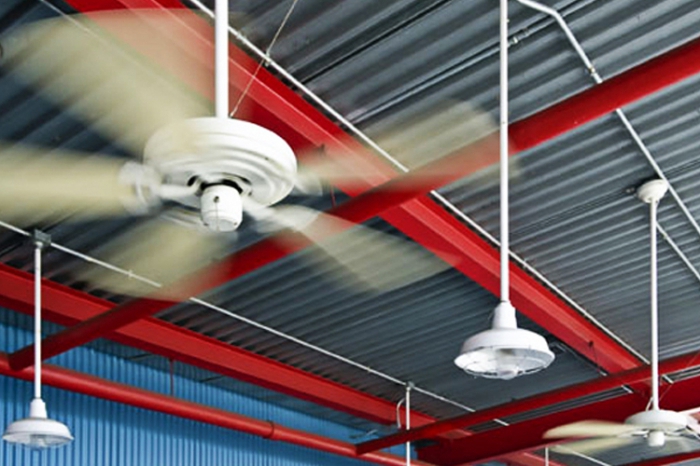
The main activities carried out in order to ensure a comfortable microclimate of public spaces are:
- mechanization of most hard work - the introduction of complex machines at the enterprise greatly simplifies and reduces the factor of human labor (for example, a conveyor);
- high-quality protection from sources that emit thermal radiation - the use of shields or curtains that remove hot air;
- the use of thermal insulation materials.
The temperature of the heated surfaces of the equipment used should not exceed 45 aboutC. In order to prevent overcooling of employees at the enterprise or in the workshop, they try to eliminate the strong mobility of drafts, and also remove the air curtains in which the heated air is located. Each employer is obliged to provide their employees with rest in places where there is a normal temperature. For those who work for a long time in the open air, warm clothing and special footwear must be provided.
The correct and high-quality microclimate of production facilities in the future will provide the enterprise with continuous work at any time of the year, as well as the maximum attendance of all employees at workplaces. So people will work without unscheduled stops, and all products will be released on time.








